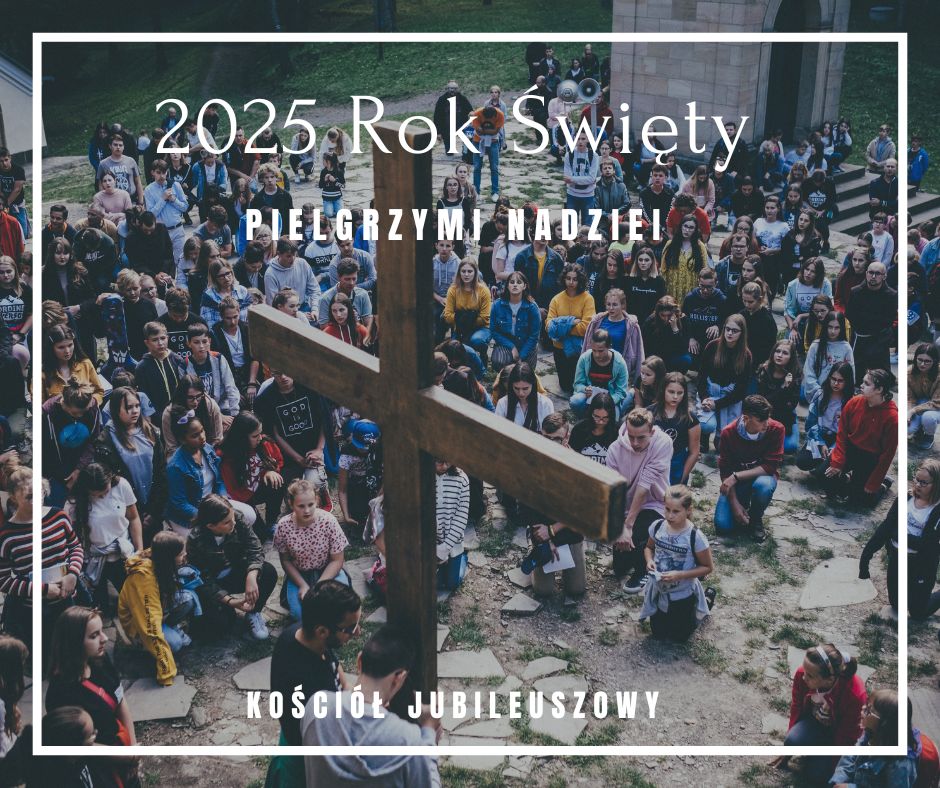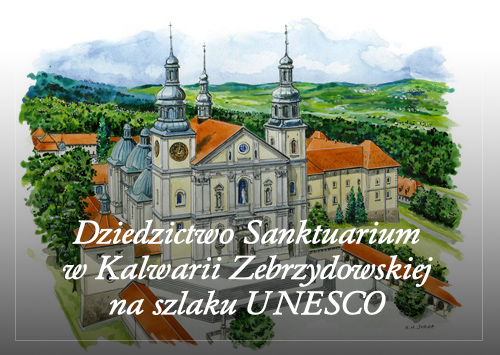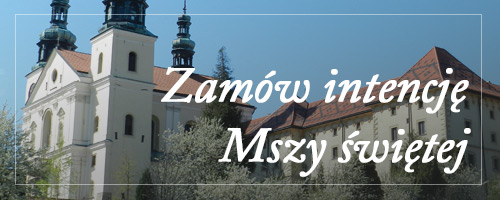Introduction
Introduction
And if I want to encourage you and excite you towards something it is to make you not stop visiting this sanctuary.
John Paul II in Kalwaria Zebrzydowska, 7th June, 1979
Kalwaria Zebrzydowska (35 km on the south-west of Cracow) is a small town situated in a valley between two low mountain ranges, on the border between the Makow Beskid and the Wieliczka Highlands, at the foot of Mount Zar on the height of 335-400m over the sea level. An international route Cieszyn-Cracow cuts through the town. The population of Kalwaria Zebrzydowska reaches about five thousand inhabitants on the area of 550 hectares.
|
The first European Calvaries
|
|
1468 Lübeck
1405 Cordoba 1493 Verallo
|
|
|
|
1400
|
1500
|
1600
|
|
|
|
1600 Kalwaria Zebrzydowska
1649 Wejherowo
1628 Pakość 1668 Kalwaria Pacławska
|
It is worth mentioning that the first European landscape (spatial) passion sanctuaries called Calvaries were created for the first time in 15th century. It was connected on the one hand with an increase of piety at the end of the Middle Ages and on the other with difficulties, which pilgrims had to fight with on their way to Jerusalem, which was in the Turkish hands. The oldest European Calvary was created in the years 1405-1420 in Spain (in the vicinity of Cordoba) due to an initiative of a Dominican – Alwarus. A little later such Calvaries appeared on German territory (e.g. in Lübeck in 1468) and in Italy (e.g. on Sacro Monte hill near Verallo in 1493). 16th century brought a break in founding Calvaries owing to reformation. Only after the Trident Council (1545-1563) the former devotion towards their creation came back again. They appeared in great numbers mostly in the 17th and 18th centuries in Spain, Germany, France, Italy, Austria, Switzerland, and also in Poland. It was connected with an increase of passion piety, which Adrian Cruys, called Adrichomius, added much to by his publications dating from the end of the 16th century. His writings, which described the Holy Land in the times of Christ, were encouragement towards creating new Calvaries and it was them that Mikolaj Zebrzydowski took an example from when founding Kalwaria Zebrzydowska at the beginning of the 17th century. The first passion ceremony based on the one in Jerusalem was serviced there in 1607.
The shrine of Kalwaria Zebrzydowska is one of the most often visited pilgrimage places in Poland. It also supposed to be among the most interesting landscape and architectural projects in Europe. More than a million pilgrims arrive here every year. The most frequented event is the celebration of the Holy Week with the Glorious Mystery of the Lord and the Burial and Triumph of Our Lady Celebrations. The Sanctuary in Kalwaria is situated on the slopes of Lanckorona mountain (530m) and Zar mountain (572m) in the 44km distance south west of Cracow and 14 km south of Wadowice. It is within Cracow archdiocese administratively and in Wadowice region and Malopolska province according to state divisions. The Sanctuary comprises a baroque basilica of Our Lady of the Angels, a Franciscan (OFM) monastery and of a group of churches and chapels in baroque and mannerist style located on the area of 6 square kilometres and introduced into a picturesque landscape of the Beskidy. The whole complex resembles holy places in Jerusalem by its topographic and architectural composition. Thus it is a specific copy of Jerusalem Via Dolorosa with its chapels to practice considerations on the Passion of Christ and Our Lady’s Life Mysteries.
On the will of Mikolaj Zebrzydowski, the first founder of the sanctuary in Kalwaria Zebrzydowska, the caretaker and the guard of the sanctuary is the Order of Friars Minor, a Franciscan order, who are informally called Bernardines in Poland. A special foundation document granting Kalwaria to the Franciscans (OFM) was signed by Mikolaj Zebrzydowski in the castle of Cracow on 1st December 1602. That is the formal beginning of Kalwaria Zebrzydowska. The first OFM Friars came to Kalwaria in 1604 when the building of the church and the monastery began.

Kalwaria Zebrzydowska is a formative place of the Order of Friars Minor (OFM) (Franciscan Friars Province). Since 1939 there has been an OFM High Religious Seminary and since 1957 also a Low Seminary moved to Lodz in 1989.
The Seminary added to the growth of religious life in Kalwaria and its vicinity and its graduates hold priestly duties in Franciscan posts both in Poland and abroad in such countries like Germany, Belgium, Great Britain, Italy, Slovakia, Ukraine, Belarus, Argentine, Libya, Congo (former Zaire), Zimbabwe, Holy Land. It should be added that the monastery in Kalwaria housed the High Seminary of Lvov Archdiocese (1946-1950) the graduates of which were, among others, rev. Waclaw Swierzawski, a retired Bishop of Sandomierz and rev. Marian Jaworski, a Roman Catholic Archbishop and Metropolitan of Lvov and a cardinal.
|
The founder of the Order of Friars Minor is St. Francisco of Assisi (1181/2-1226) who received the Church approval of founding a new order in spring 1209 as an oral statement from the Pope Innocent III. The date of the canon foundation of the new order is traditionally accepted as the 16 April 1209.
|
Kalwaria Zebrzydowska is a seat of an official Franciscan Publishing House “Calvarianum”. It tries to popularise these values which the sanctuary in Kalwaria represents together with Franciscan ideas and attitudes. The House publishes books and albums connected with John Paul II’s pontificate.
Kalwaria Zebrzydowska is a point of interest not only for pilgrims but for numerous reporters journalists, painters, film people and photographers who are attracted by beautiful, hilly countryside, vast area, surrounding nature, architecture and, most of all, religious ceremonies: Christ’s Passion in the Holy Week and Marian celebrations in August.

















